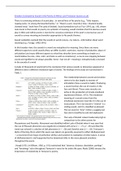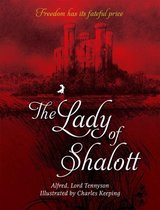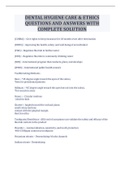Emotion Conveyed by Sound in the Poetry of Alfred, Lord Tennyson (sussex.ac.uk)
There is convincing evidence of sound play… in several lines of his poetry (e.g., “Only reapers,
reaping early,/ In among the bearded barley,” or “Heard a carol, mournful, holy,/ Chanted loudly,
chanted lowly,” both from The Lady of Shalott). Sound symbolists such as Tsur (1992, pp. 1-8), whose
main tenet is that sounds in poetry are symbolic of meaning, would maintain that this obvious sound
play in titles and within poems is merely the conscious extension of the poet’s unconscious use of
sound to convey meaning and emotion appropriate to his poetic themes.
Sound symbolists contend that the sounds in words convey—by nature—information about word
meaning (e.g., Fonagy, 1983/1991)
In this broader view, the sounds in a word are metaphors for meaning. Since there are many
different aspects to word sounds (they can differ in pitch, overtones, manner of production, place of
articulation) and many different aspects to what they describe (even something as simple as a
marshmallow has size, color, odor, and taste as well as consistency), a one-to-one mapping between
sound and signified is not always possible. Some—but not all—meaning is metaphorically conveyed
in the sounds of a word
A study of thousands of words led to the conclusion that various sounds or phonemes appeared at
different rates in different emotional types of words. The findings of this study are summarized in
Table 1.
The relationship between sound and emotion
seems to be due largely to manner of
articulation (how a sound is made). Producing
a sound involves the use of muscles in the
face and throat. These same muscles are
active in the production of innate emotional
expressions (Ekman, 1972). The emotional
meaning of a sound comes from the
emotional expression most like it in the use of
musculature. The e (iy) sound in “cheese” is a
smiling sound, and it is classified as pleasant.
The ow sound in “lone” mimics a sagging sad
face and is classified as sad and unpleasant
The Lady of Shalott ranked moderately high in
comparison to the other poems for
Pleasantness and Passivity. Movement was identified within Lady of Shalott when it was seen that
the use of Pleasant phonemes was negatively correlated with verse (r = –.71, p < .05) and that this
trend was echoed in a decline of Soft phonemes (r = –.50) and Cheerful ones (r = –.43). Tennyson’s
Idylls of the King (from which this poem was taken) are generally assumed to reflect disillusionment
—a movement from hope of perfection (Arthur and Camelot) to realization of sinful nature. A sense
of disillusionment is well supported by the downward slide in the more pleasant emotions
throughout the poem.
. Hough (1951, in Killham, 1960, p. 191) maintained that “absence, distance, desolation, partings”
and “forsakings” echo throughout Tennyson’s verse for his entire life span. Riede (2000) stresses the
importance of melancholy in Tennyson’s poetry,






